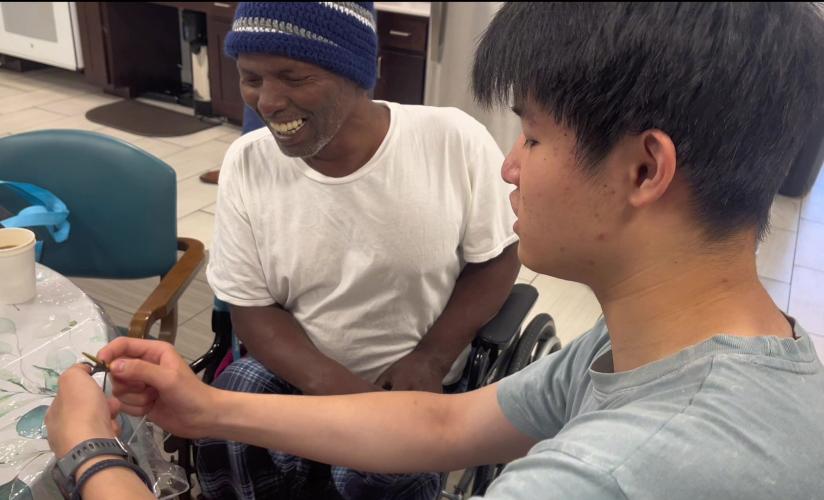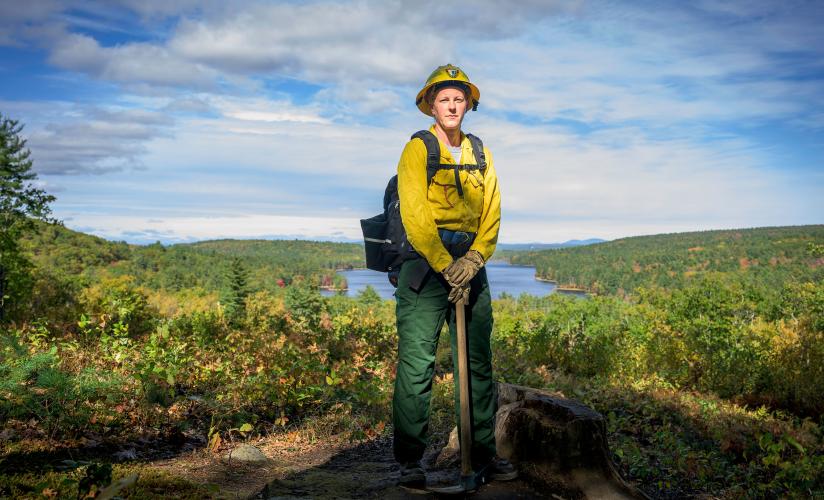

Visiting artist Byam Stevens ’71 helps dancers live the truth of their craft.
BY HOLLAND GOSS ’24
Byam Stevens ’71 started dancing at the American Ballet Theatre School in New York at age eight and came to St. Paul’s School as a Second Former. At the time, SPS did not have a dance department, and when a serious knee injury between Second and Third Form ended his dance life, he became involved with theater, setting the stage for a cross-disciplinary pursuit he would undertake seriously in college. During the summers after his Fifth and Sixth Form years, Stevens worked for American Ballet Theatre as an assistant stage manager, and he took a gap year between graduating from SPS and matriculating at Yale to travel the world with ABT as assistant general manager. During that time, he witnessed groundbreaking ballet performances and got to watch master choreographers and dancers at work. After college, he worked as an actor, but found himself gravitating toward directing and roles at not-for-profit theaters in New York. He spent almost 20 years as the artistic director of a professional theater company in Massachusetts before leaving in 2015 to pursue full time a passion he had spent many decades nurturing on the side: helping dancers tackle some of the challenges their craft shares with acting. Stevens spent three days at SPS in early February working with members of the St. Paul’s School Ballet Company, sitting down with me one morning to answer questions.

How would you describe what you do to someone who’s meeting you for the first time?
I am developing a curriculum — or more accurately, a set of tools for dancers that grows their communication skills in terms of sharing a story, feelings, emotions and ideas with the audience. If it’s a story ballet, I’m also working on the actual nuts and bolts of creating characters. Those are two slightly separate fields, although they obviously cross over.
You have a unique perspective on both acting and dancing. Can you tell me what the shared issues between the two are, and how you recognize them?
Not being in the present — anticipating — that’s the big issue. One of the greatest challenges to the performing artist is knowing what comes next but behaving as if you don’t. The problem with not being in the present is that you are actually living in your mind five seconds in the future. You’re not there for your acting or dance partner — you’re in a parallel universe, stressing about what you have to do next. You must trust that the hours of rehearsal will pay off, that you’ll remember what comes next, so that you’re free to make the discovery you have to make and the audience can experience it at the same time you do. The path back to the present is thinking your way through the process: Who am I talking to? What am I saying? Where do the thoughts change? Where are the impulses? Living in the present, ultimately, is about overcoming our anxiety about making mistakes.
Why do you emphasize the importance of doing, as opposed to showing or being?
If you are showing, you’re not doing what the audience paid you to do: the action. In theater we call it indicating: you’re indicating that you’re doing it, instead of actually doing it. As for being versus doing: “being” doesn’t work because you’re playing a mood or an adjective. Adjectives connote qualities — qualities that are typically so generalized they’re not useful, so vague that you can’t particularize them. You can’t play an adjective; you can play a verb. Verbs are action. And, if you are an actor or dancer, you’re being paid to create action.
Physical portrayal of character is more than just facial expressions, as you’ve stressed. How do you convey character through body language?
Dancers and actors tend to be fascistic with their bodies, constantly dictating — do this; do that — instead of listening to them and opening up a feedback loop. Suppose you’re playing Richard III, a hunchback. Richard’s experience is being stared at all day, every day — being looked on as a freak. Resentment builds within him and, after a while, a man of his talent and energy begins to dare people: “What are you looking at?” His anger and resentment have turned outward. It makes him want power over the people who look down on him. So, a simple skeletal displacement changes who you are and how you think. In the end, Richard is not aligned, both literally and metaphorically. The actor can likewise displace architectural or skeletal elements in the body and then open up the feedback loop: “how’s this make me feel?” And after living with that skeletal adjustment in rehearsal every day, you would begin to know who Richard III is because you would feel it in your body. And then, knowing it, it would be organic to share it with the audience and with your fellow actors.
Do you always teach a particular role the same way? Or does it depend on the dancer?
I actually don’t “teach” a role, I lead an exploration that is directed by the artist’s deepest though perhaps inchoate beliefs concerning the ballet. The first thing I do when coaching is to sit down across a table, like this one between us, and say, “What do you want to do with this role? What do you want to say about the human experience?” I’m there as a midwife. I’m helping to get their baby born, the baby of their conceived idea. I’m not there to do the director’s job, to steer the dancer toward an interpretation. But I am very much leaning into context: Where are we? What are the politics of that time and place? What is the societal structure, the hierarchy? What are the prevailing beliefs? With a solid context, you can start to make choices that fit. We’re here to serve the play, serve the ballet. You can’t just start making provocative and “interesting” choices that bend the piece out of shape. You have to do your innovating within certain bounds.
Is there any connection between your current career and your St. Paul’s experience?
There are so many habits of mind I acquired at St. Paul’s that I apply every day in my work: critical thinking, questioning everything — from the received wisdom about a play or ballet to my working methodology; being articulate, expressing one’s ideas clearly, talking to an actor or dancer in a way that’s specific. The death of acting, the death of any performance is trafficking in generality; the more specific the impetus, the more nuanced the response or action. St. Paul’s School gave me a love of language, the way it works. In my business — language, the text … it’s everything.



